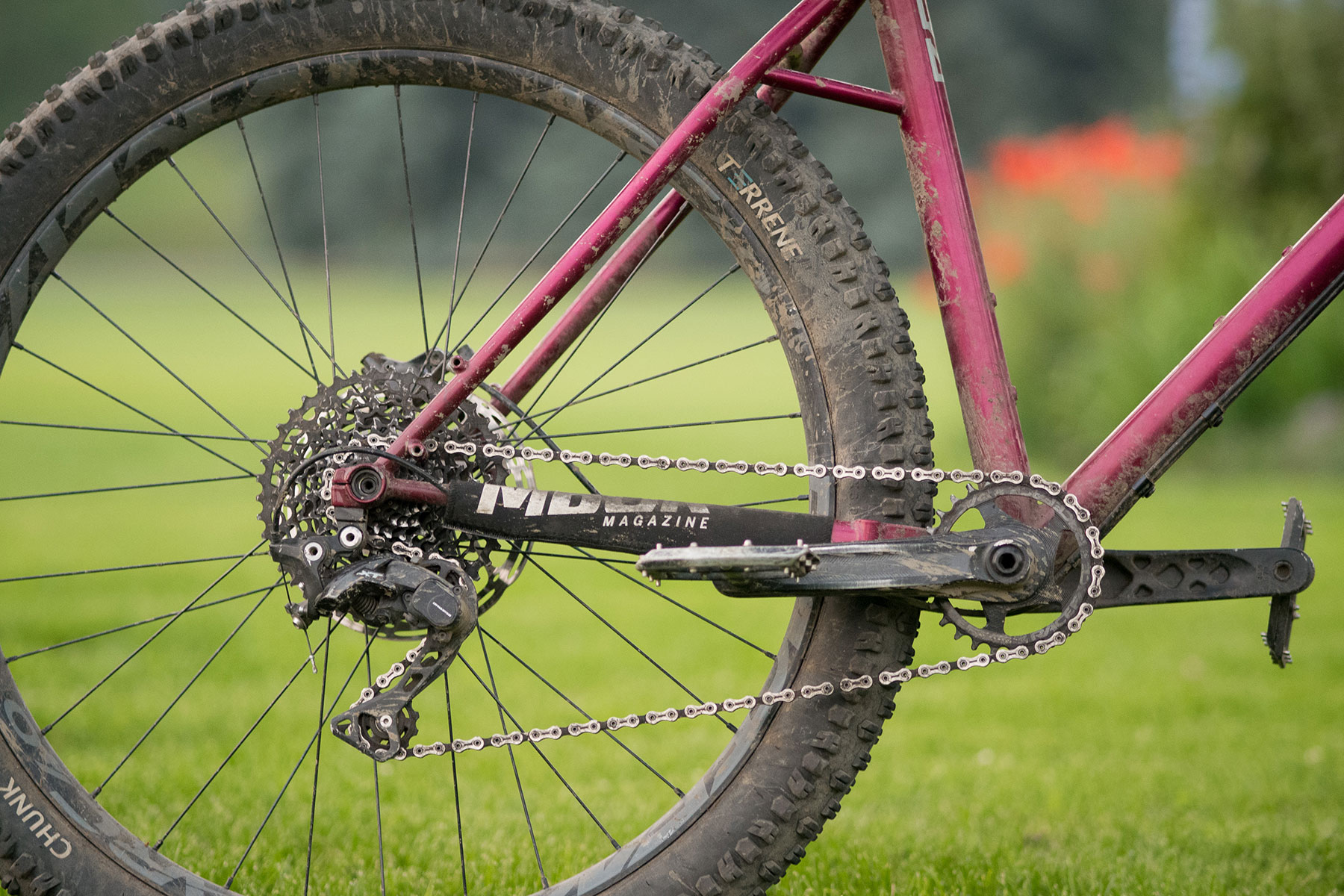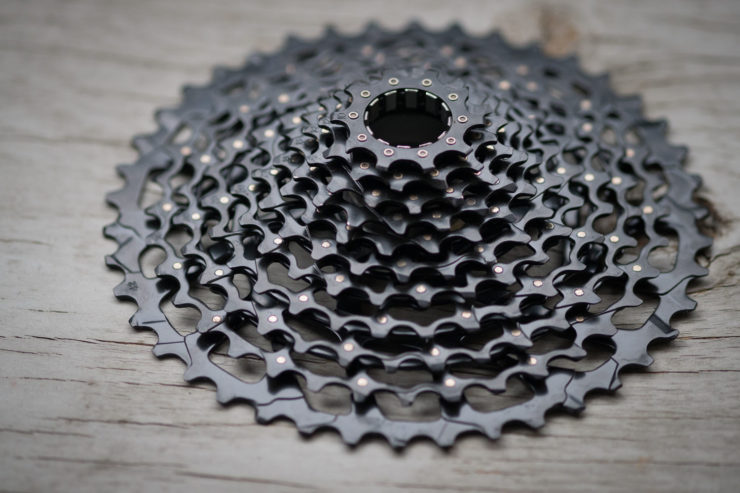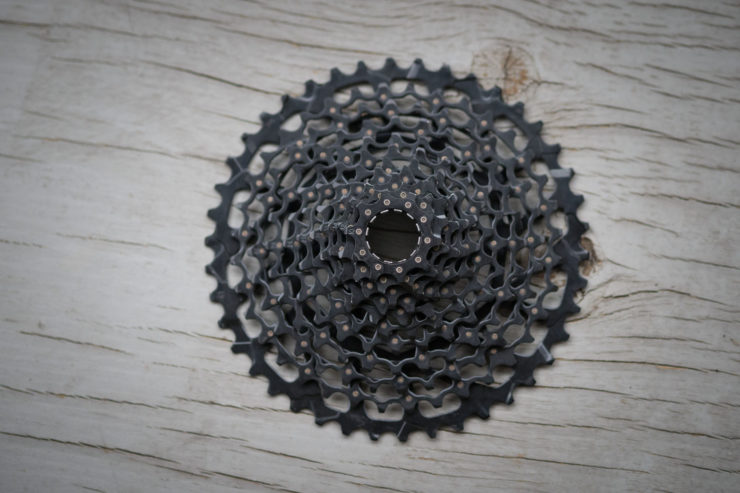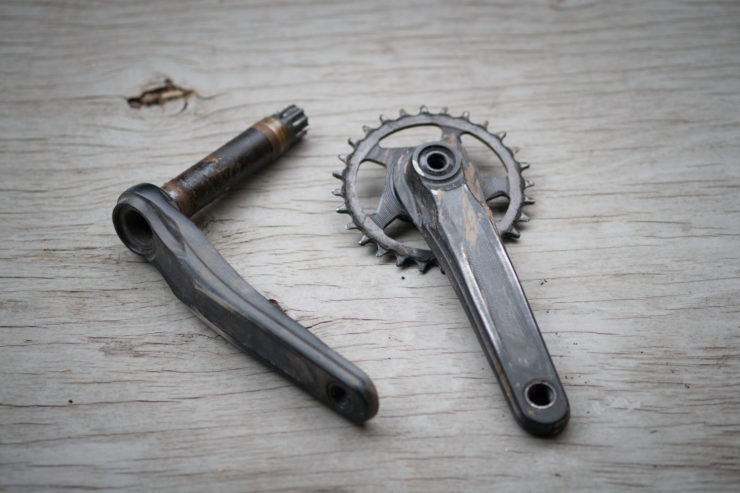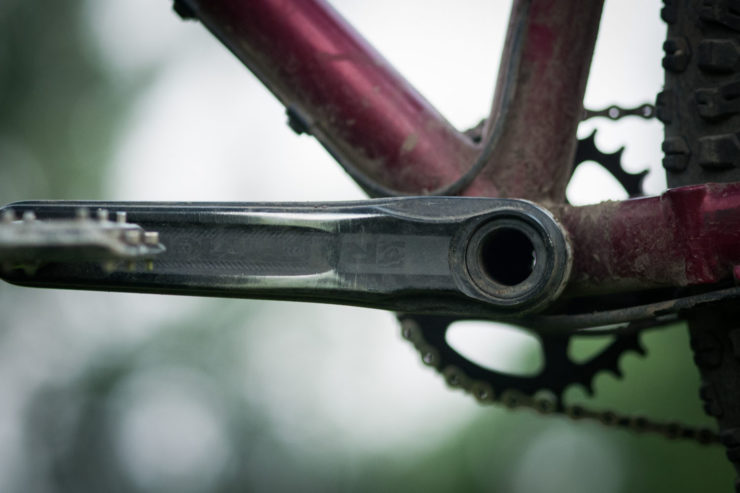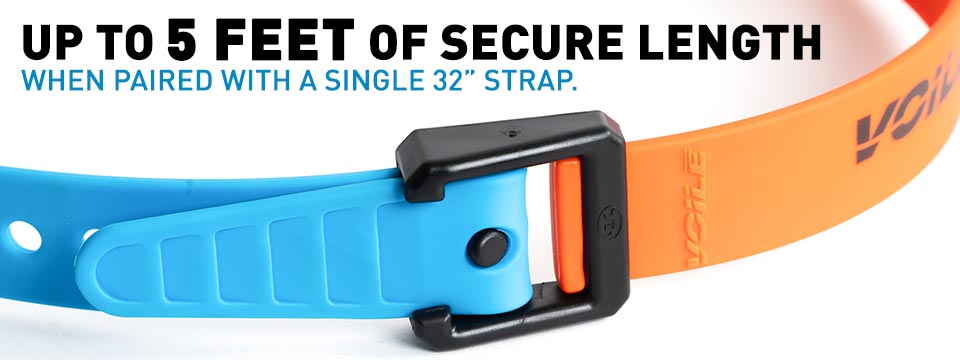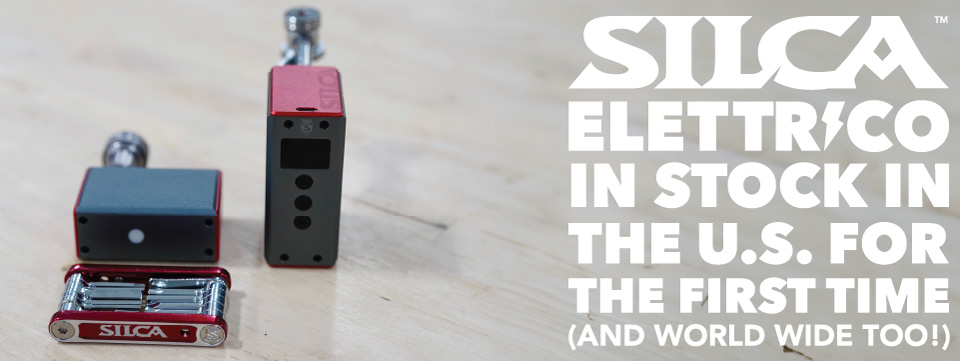The People’s Liberation Drivetrain
In the struggle to break topographic barriers, the proletariat have had the deck stacked against them. The People have been tantalized by opulent 12-speed drivetrains, but left priced-out of all but unfashionably low cog-counts. But, the answer to the long-standing connundrum of price vs. performance comes not from one team or another, but rather from a mixed, cooperative force – Shimano, Sram, and Race Face brought together into a victorious union: The People’s Liberation Drivetrain.
PUBLISHED Aug 29, 2017
A tech opinion by Skyler Des Roches
The world has been hijacked by marketing. Even while the experience of pedaling a bike on a backcountry trail remains a pure distillation of bliss, our little cycling world has been hijacked by marketing all the same. The hijackers are corporations that co-opt the lifestyles of living, breathing, flip-phone toting dirtbags through carefully curated social media content. They’ve dressed our heroes in novelty socks and matching designer “kits”. They’re going for the hard sell on luxury goods.
But the decadence one sees in the cycling fashion bloggosphere is not of the People. No, comrades, it’s a distraction from what we should be doing – which is eating our vegetables and riding our damn bikes – and the latest and greatest cycling tech might as well not exist for most cyclists or would-be-cyclists.
We the 99% cannot wield these dinner-plate cassettes that cost more than my last car. Look, but do not touch. Twelve-speed drivetrains and electronic shifting are mere temptations of Late Capitalism, conspicuous wealth-flaunting novelty at the climax of a neoliberal dystopia.
Alas, I have not been immune to the lure of luxury bike parts. I have sampled the caviar. My tastes are expensive, while my pockets remain shallow. Yet there is hope! We have found an answer by mixing and matching “value” products to successfully find affordable excellence. While the oligarchs stand at the consoles of their weaponized drones and orbital warheads, the People still have the AK-47. Cheap, functional, and hard to break. (Or maybe the white Toyota Hilux is a better analogy – under-powered, over-achieving, packed with AK-wielding freedom fighters. Whichever…it’s all the same.)
This, the AK-47 of the 1×11 drivetrain world, we dub “The People’s Liberation Drivetrain”
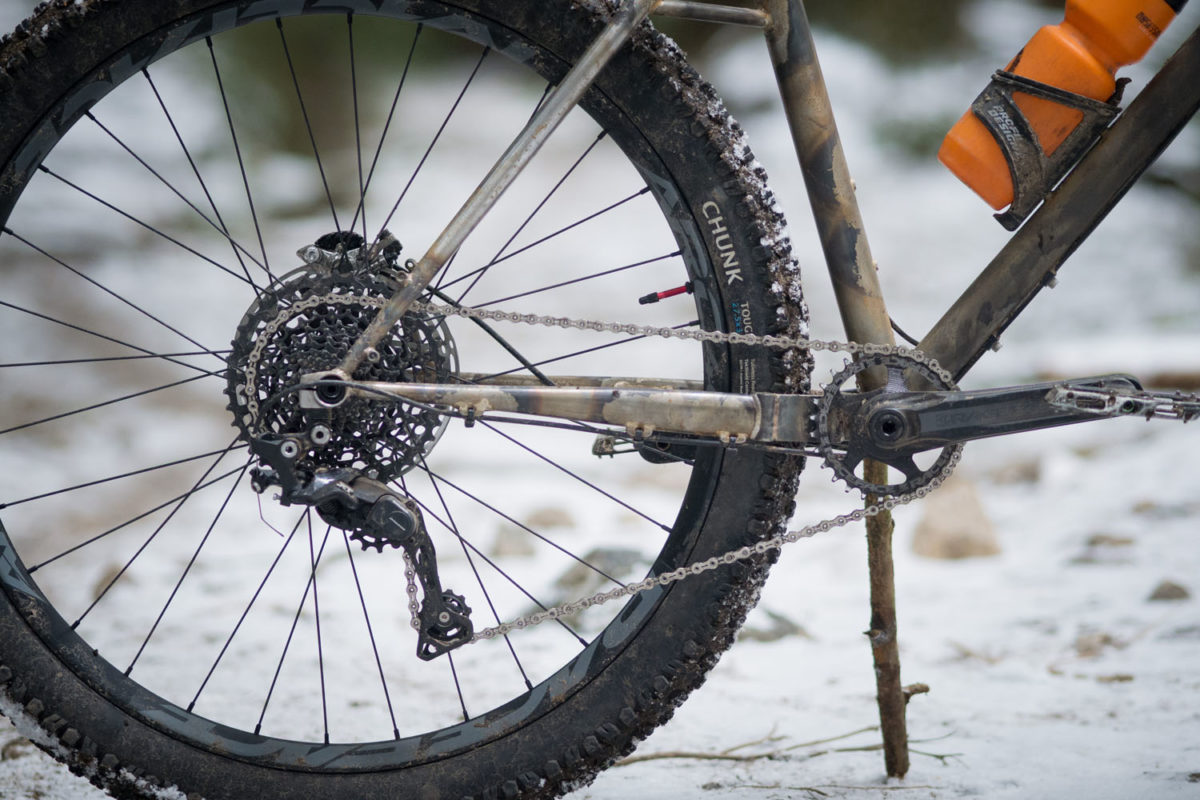
I came to this mix of drivetrain parts because of SRAM’s GX-level XG-1150 10-42 tooth cassette. In short, I wanted what seemed impossible: full-steel construction, durability, a wide range, a low price, and a relatively low weight. And, in this incredible world we live in, it actually exists!
So, the basis of the PLD comes from an acknowledgment of the brilliance of SRAM’s XD driver and the resulting 10-42 cassette, without submitting fully to SRAM’s premium pricing in the mid-upper tiers. While straight SRAM GX 1×11 drivetrains also perform well, I have some vague bias toward the rebuildability, and durability of Shimano transmissions. So, the PLD is, at the core, a mixing of Shimano derailleur/shifter with a SRAM cassette. For better or for worse, Shimano mid-range drivetrain components can be had pretty cheaply from online vendors, which has driven down the price everywhere.
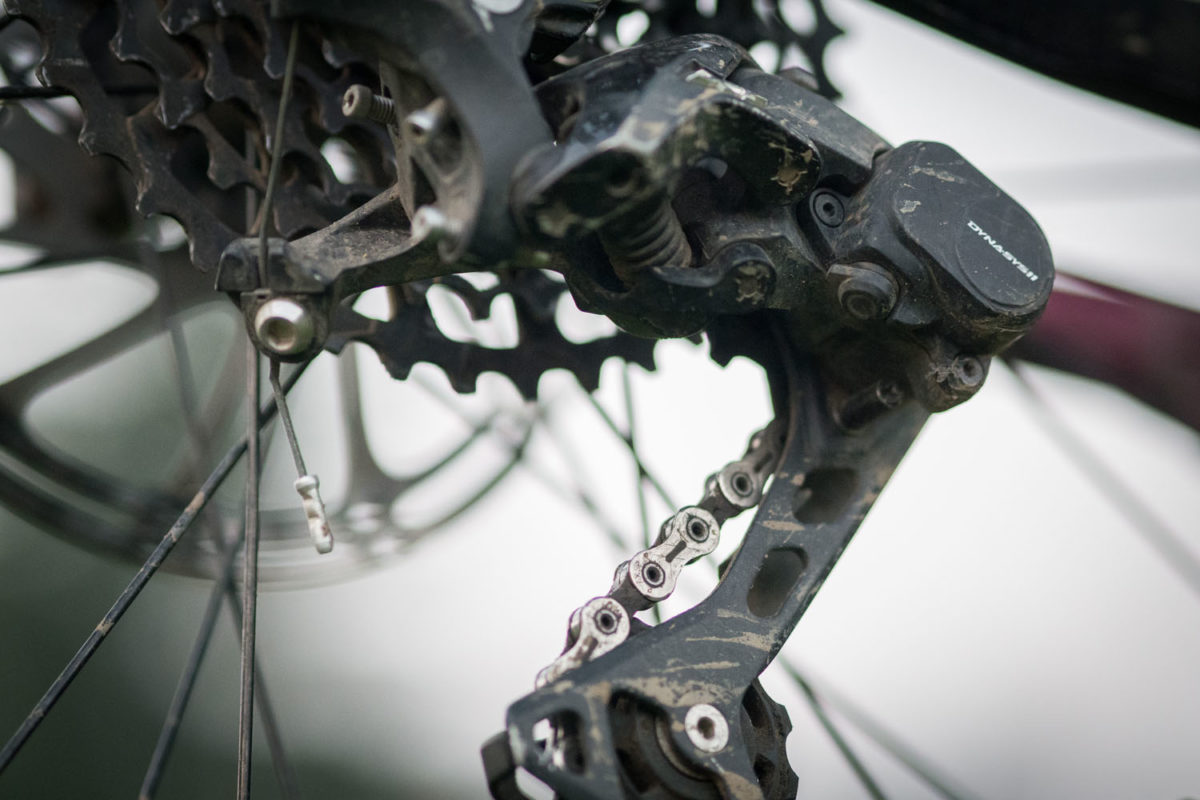
Derailleur
Shimano XT M8000 or SLX M7000 – The reason I’ve gone with the higher-end XT option is because they were the same price when I bought it. But, the differences between XT and SLX derailleurs are tiny. Namely, both inner and outer plates on the derailleur cage are made of aluminum on XT, while one side is steel on SLX. Similarly, SLX uses a steel piece on the inside of the parallelogram while XT sticks with aluminum. The difference is a paltry 50g weight penalty with no tangible performance difference. A true PLD will chose whichever is cheaper.
While a SRAM GX is comparable in price to these, and works rather well, if you want a Shimano XT shifter (which I certainly do), you’ve got to have the derailleur to match. Moreover, the clutch tension on Shimano’s “Shadow Plus” derailleurs is adjustable, while that is not the case on any SRAM product. The “clutch” introduces friction into the movement of the derailleur cage in order to dampen chain slap and avoid chucking the chain on single-ring set-ups. Over time, this clutch will wear. On a Shimano derailleur, you can just tighten it up and even rebuild it, while on a SRAM rear derailleur, this means no more clutch action.
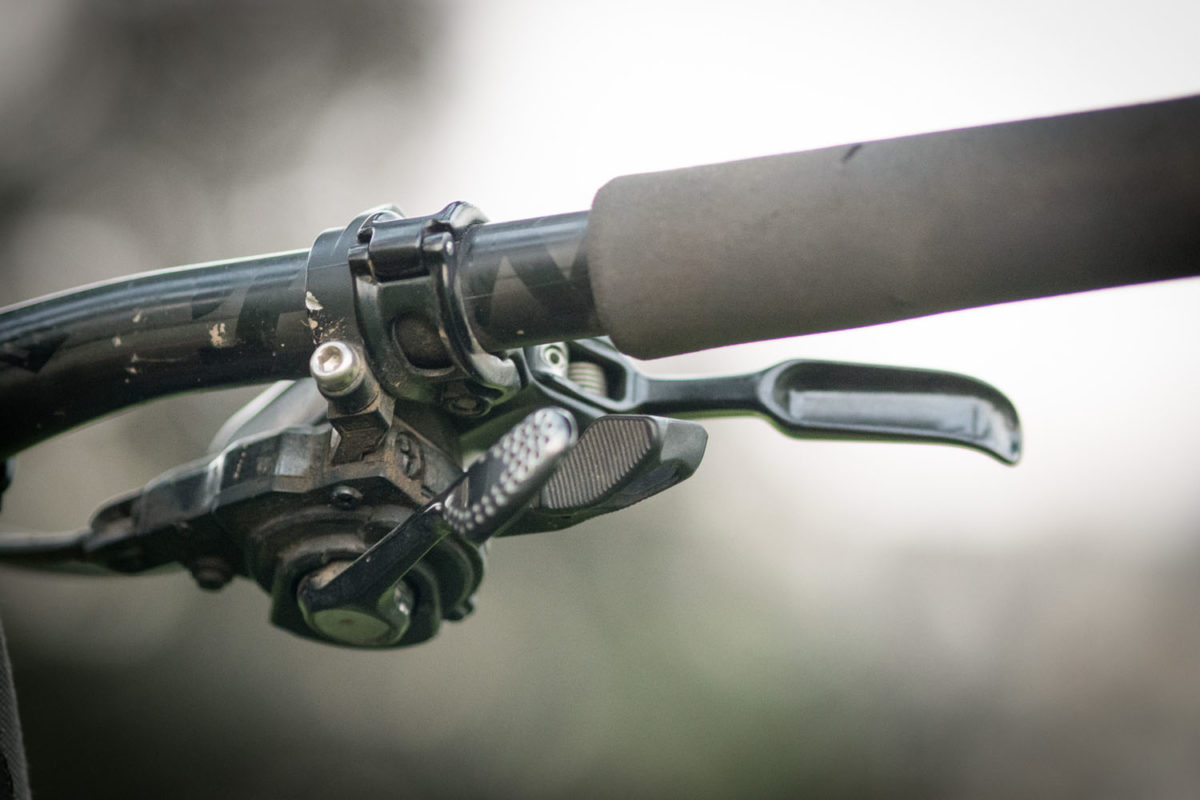
Shifter
There are actual differences between XT and SLX shifters: The XT m8000 shifter has a sturdy, metallic construction compared to SLX’s plasticky build and less-defined shifting feel. XT can also do double upshifts to quickly gear up at the start of a descent. To me, the extra $15 is worth it for that XT feel. Besides, the shifter is what actually counts in shifting performance. Remember, the objective of this game is affordable excellence, not simply the lowest price.
Cassette
SRAM’s GX-level XG-1150 10-42t cassette is the most expensive part of the PLD, running at $130MSRP. The beauty of this cassette is two-fold: for one, thanks to the XD-mount, it provides the same gear range as Shimano’s ever-affordable 11-46 cassette, but does so at under 400g. Moreover, all cogs on the XG-1150 are made of steel, while I’ve found Shimano’s largest aluminum cogs (the 37 or 46 tooth cogs) to wear out in less than a season. Finally, the gear steps feel much more even on the SRAM option, whereas Shimano’s jump from the 37t cog to the 46 feels very big.
So, for a few dollars more than Shimano’s cassette, I’ve found SRAM’s “Full Pin” all-steel cassette to last much, much longer. For that price to quality ratio, this cassette wins. Plus it’s black. And if a decade of socialization-by-social media has taught me anything, it is vanity.
Crankset
One’s gearing in a 1×11 drivetrain depends as much on the crankset as on the cassette. While the range of SRAM’s 10-42 is basically the same as Shimano’s 11-46, they require different chainrings to achieve all the same ratios. For loaded bikepacking, I’ve found that the smallest rings that can fit on 4-bolt cranksets (usually 30 tooth) can still sometimes feel geared too high. The solution has been an advent of direct-mount cranksets, that have no chainring bolts at all. These are often expensive, with one exception: Race Face Aeffect cranks with their Cinch chainring interface.
Race Face Turbines have been some of the most coveted aluminum cranks since their inception in 1984, and the latest interation, with their 30mm spindle and Cinch direct-mount chainrings are beautiful as ever. Meanwhile, Race Face’s Aeffect cranksets have been one of those low-key performers commonly specced on complete bikes, but not garnering much attention.
The difference between Turbines and Aeffect cranks? Turbines use a 30mm aluminum spindle and proprietary bottom bracket, while Aeffects employ a standard 24mm steel spindle – the same used on Shimano cranks for the last ten years – at a weight penalty of merely 20g compared to Turbines. As a result, Aeffect cranks mate perfectly with the ubiquitous and famously reliable XT bottom bracket – which can commonly be found for under $20. Yet, due to its Cinch chainring interface, this crank can be used with chainrings from 24 to 42 teeth. I’ve found a 28T ring to provide all the range I need for mixed-terrain bikepacking.
Earlier this year, Race Face teased a new steel direct-mount Cinch chainring that will retail for only $19. I’ve not touched one yet, but if my other experiences with steel chainrings hold true, it is sure to last years without showing any wear.
But, be warned, the Aeffect cranks do not come with a self-extracting bolt – the puller bolt cap is a ~$7 add-on, which you’d be well-advised to purchase if you want to avoid the faff of an old-school crank-puller.
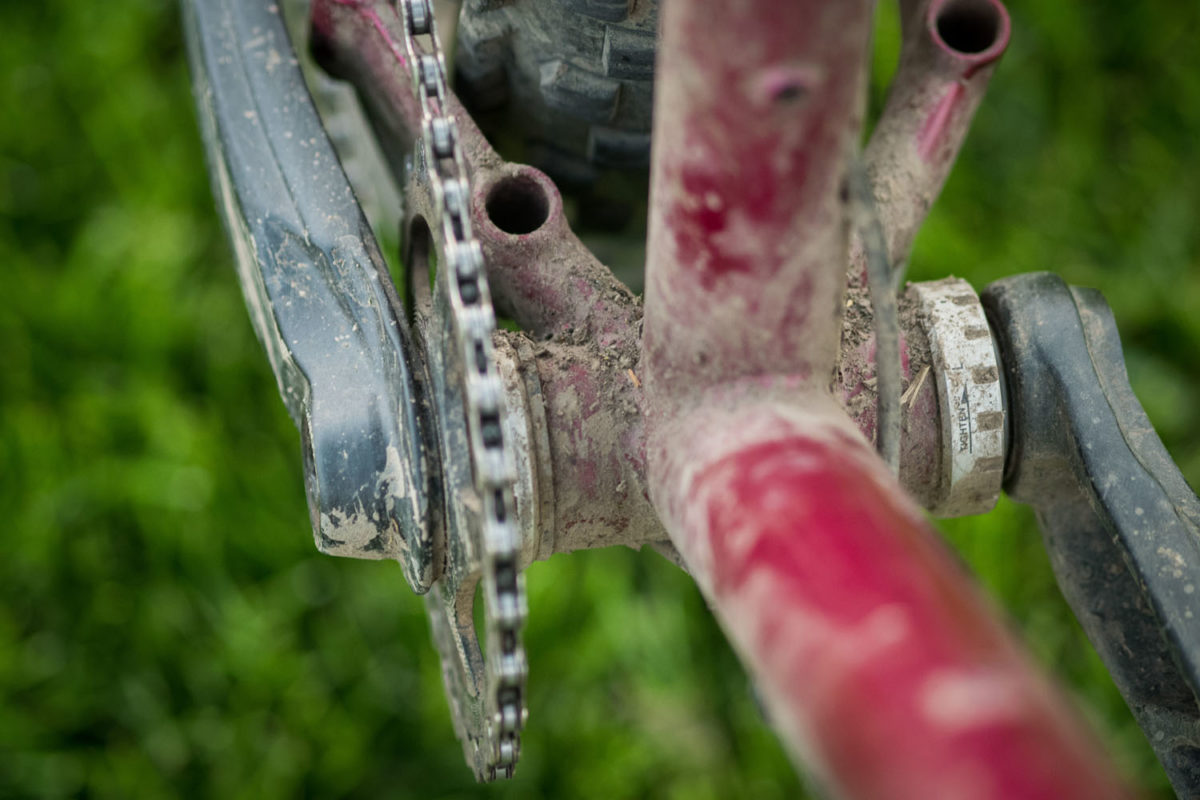
Chain
In my experience, chains are one of those rare components where price is roughly correlated to longevity. No, it’s no hard-and-fast rule, but the higher-end choice from any particular manufacturer will tend to outlive the cheaper choice. If you ride a lot, the nicer (usually) nickel-plated choice will cost more up front, but work out the same or a bit better over the life cycle of the chain.
Cost and Conclusion
- Race Face Aeffect Crankset (w/30T ring): $150
- SRAM XG-1150 Cassette: $130
- Shimano M7000 Derailleur: $70
- Shimano M8000 Shifter: $65
- Shimano XT Chain: $33
- Shimano XT BB: $26
- Total: $474*
*One can often acquire these components for a significant percentage below MSRP in the real world, at your LBS. For whatever reason, Canadians can usually expect to pay more than MSRP. In such a case, it is possible to order all pieces from the US for about $365USD.
We live in an age of drivetrain greatness – excellent performance can be had at a relatively affordable price-point from a variety of brands. By picking and choosing pieces, mixing and matching brands, I think I’ve settled on a particularly robust, serviceable, and adaptable 1×11 drivetrain, all at price to performance ratio that, just a few years ago, no one would have believed could happen.
Please keep the conversation civil, constructive, and inclusive, or your comment will be removed.

We're independent
and member-supported.
Join the Bikepacking Collective to make our work possible:







